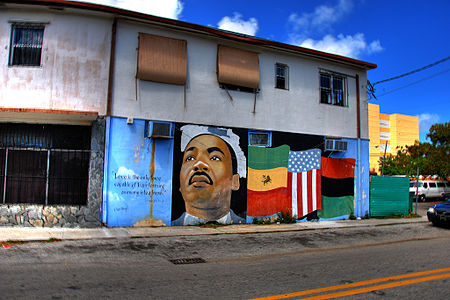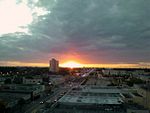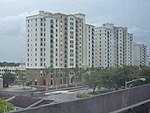Liberty City (Miami)
1930s establishments in FloridaAfrican-American history in MiamiNeighborhoods in MiamiPopulated places established in the 1930sUse mdy dates from January 2012

Liberty City is a neighborhood in Miami, Florida, United States. The area is roughly bound by NW 79th Street to the north, NW 27th Avenue to the west, the Airport Expressway to the South, and Interstate 95 to the east. The neighborhood is home to one of the largest concentrations of African Americans in South Florida, as of the 2000 census. Although it was often known as "Model City" both historically and by the City of Miami government, residents more commonly call it Liberty City. It is serviced by the Miami Metrorail at Dr. Martin Luther King Jr. Plaza and Brownsville stations along NW 27th Avenue.
Excerpt from the Wikipedia article Liberty City (Miami) (License: CC BY-SA 3.0, Authors, Images).Liberty City (Miami)
Northwest 62nd Street, Miami
Geographical coordinates (GPS) Address Nearby Places Show on map
Geographical coordinates (GPS)
| Latitude | Longitude |
|---|---|
| N 25.831801 ° | E -80.224829 ° |
Address
Northwest 62nd Street 1601
33147 Miami
Florida, United States
Open on Google Maps



